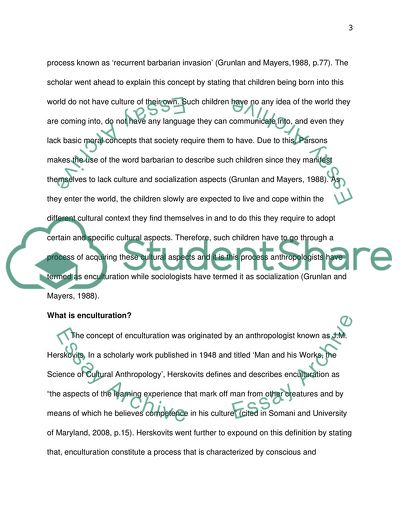Cite this document
(Enculturation and Cognition of Children Research Paper Example | Topics and Well Written Essays - 2250 words - 1, n.d.)
Enculturation and Cognition of Children Research Paper Example | Topics and Well Written Essays - 2250 words - 1. https://studentshare.org/anthropology/1754985-eculturation-and-cognition-of-children
Enculturation and Cognition of Children Research Paper Example | Topics and Well Written Essays - 2250 words - 1. https://studentshare.org/anthropology/1754985-eculturation-and-cognition-of-children
(Enculturation and Cognition of Children Research Paper Example | Topics and Well Written Essays - 2250 Words - 1)
Enculturation and Cognition of Children Research Paper Example | Topics and Well Written Essays - 2250 Words - 1. https://studentshare.org/anthropology/1754985-eculturation-and-cognition-of-children.
Enculturation and Cognition of Children Research Paper Example | Topics and Well Written Essays - 2250 Words - 1. https://studentshare.org/anthropology/1754985-eculturation-and-cognition-of-children.
“Enculturation and Cognition of Children Research Paper Example | Topics and Well Written Essays - 2250 Words - 1”. https://studentshare.org/anthropology/1754985-eculturation-and-cognition-of-children.


